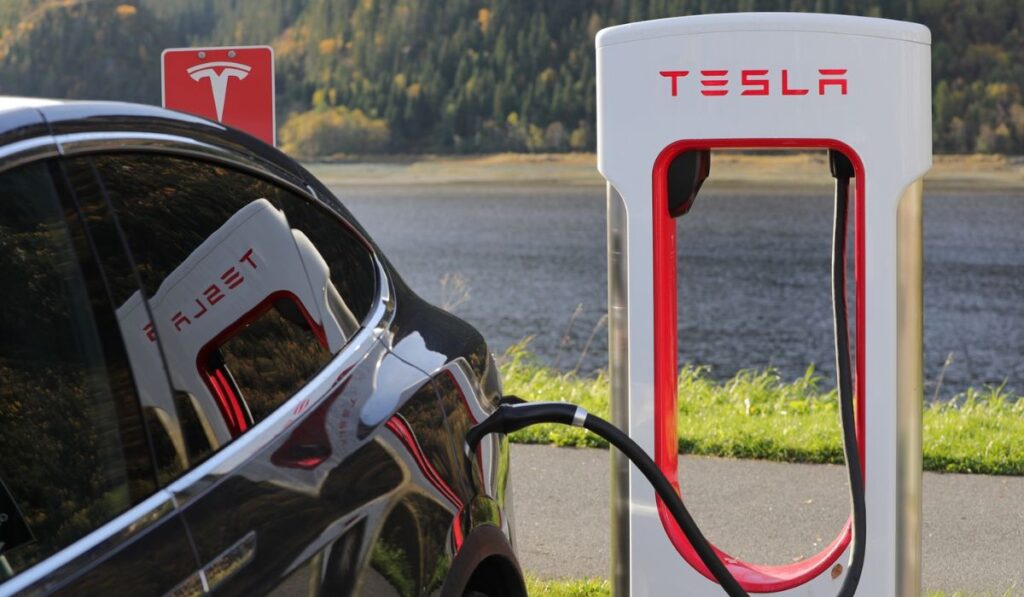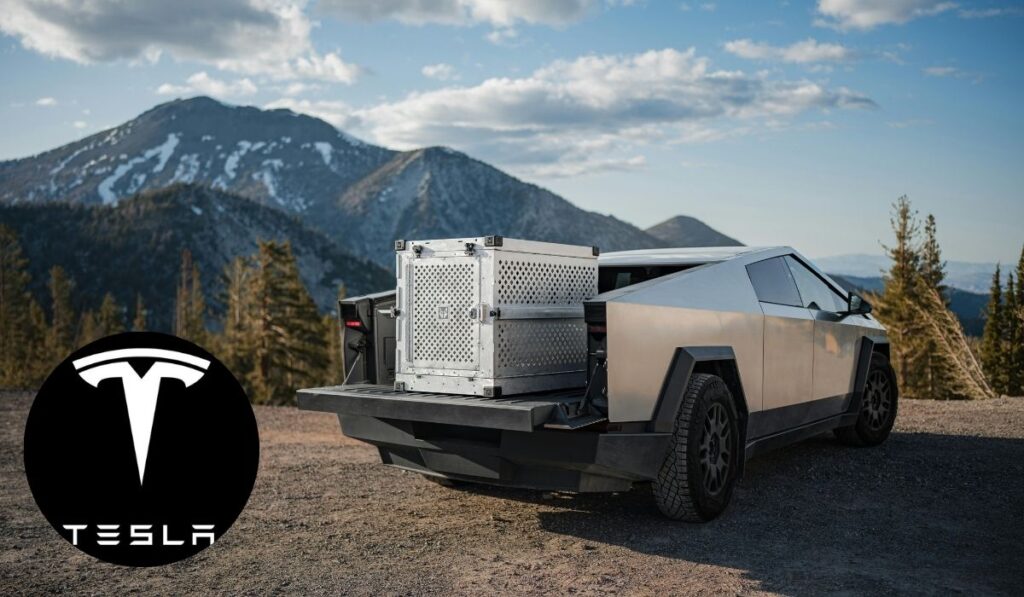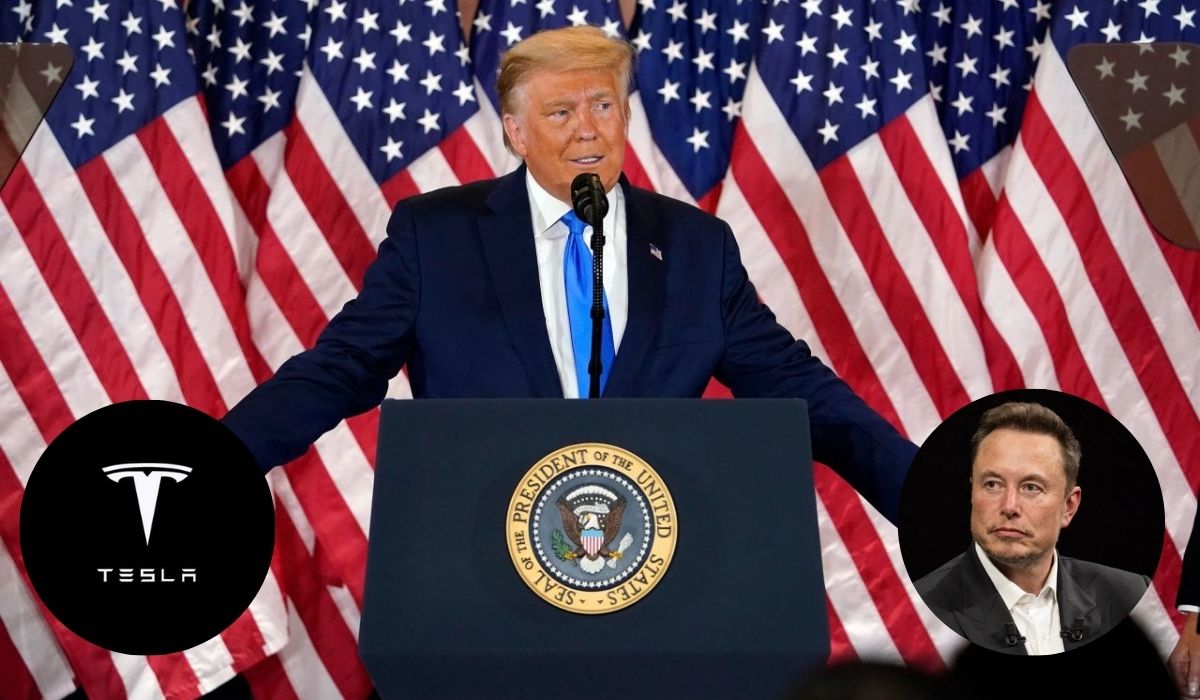The recent re-election of Donald Trump has sparked speculation on the future of the U.S. electric vehicle (EV) sector, particularly for Tesla, the country’s leading EV manufacturer. In the wake of Trump’s victory, Tesla’s stock surged by about 14%, a sign of investor optimism that the new administration may create favorable conditions for Elon Musk’s company. However, the situation brings a mix of opportunities and challenges, not just for Tesla but for the entire EV industry.

Tesla’s Unique Position Under Trump’s Policies
Tesla’s relationship with the Trump administration could give it a competitive edge in an otherwise turbulent policy environment. Elon Musk has been a vocal Trump supporter and a substantial donor, giving over $119 million to Trump’s campaign. Analysts at Wedbush Securities note that Tesla’s unparalleled scale could allow it to thrive even if Trump rolls back subsidies and incentives that have previously fueled the EV sector. “Tesla has the scale and scope that is unmatched in the EV industry, which could give Musk and Tesla a clear competitive advantage in a non-EV subsidy environment,” remarked Dan Ives, Wedbush analyst.
Despite the potential policy headwinds, Tesla’s dominant market share could shield it somewhat from Trump’s proposed changes. Smaller EV companies, such as Rivian and Lucid, might struggle without government support, potentially consolidating Tesla’s market position as subsidies wane. Nevertheless, Trump’s administration could put pressure on the broader EV industry, reducing incentives and increasing tariffs that impact international supply chains.
Potential Rollbacks on Subsidies and Climate Policies
Trump’s campaign included pledges to dismantle significant portions of President Biden’s Inflation Reduction Act (IRA), which has been a substantial support system for EV manufacturing and adoption in the U.S. The IRA provides incentives that lower consumer costs for EVs and funding for battery production and mining, initiatives that Tesla has benefited from over the past few years. Removing these would create new hurdles for companies heavily reliant on these funds.

Additionally, Trump’s stance on climate policy could impact the National Electric Vehicle Infrastructure (NEVI) program, which funds the development of EV charging stations. Although 14% of NEVI funding has supported Tesla’s Supercharger network, Trump may attempt to cut or repurpose these funds, especially if Musk himself questions their necessity. Trump has also stated his intent to weaken federal greenhouse gas emission standards, which Biden’s administration strengthened to target a 50% reduction by 2032. Such regulatory changes would relieve traditional automakers from EV production pressures, likely stalling broader industry progress.
Implications of Tariffs and Foreign Relations
Tariffs on imported goods, a cornerstone of Trump’s economic strategy, could have wide-reaching effects on Tesla’s supply chain. Proposed tariffs of 10% to 20% on goods from countries like China may increase Tesla’s production costs, as components for Tesla vehicles, especially batteries, are sourced internationally. This situation could force Tesla to consider “reshoring” some of its supply chain, increasing reliance on domestic suppliers, or restructuring production to offset added costs.
Furthermore, Tesla’s operations in China, including its Gigafactory in Shanghai, could face challenges. U.S.-China tensions may escalate under Trump, potentially leading to retaliatory trade policies that could impact Tesla’s sales in China, one of its most profitable markets. China might also impose tariffs or encourage its domestic EV players, such as Nio and BYD, which could threaten Tesla’s standing abroad.
A Complex Path Forward for Tesla and EVs
While some investors see the Trump administration as a potential boon for Musk and Tesla, industry analysts warn that the EV sector’s long-term growth could face substantial obstacles. If government support for EVs declines and tariffs escalate, traditional automakers may slow their shift to EV production, limiting innovation and growth across the industry.
Tesla’s market resilience, vast production scale, and Musk’s close ties to Trump may help it endure these challenges better than its competitors. However, industry watchers question whether even a dominant player like Tesla can fully compensate for policy rollbacks that hinder industry-wide adoption. The coming years will test Tesla’s adaptability and reveal whether Musk’s company can maintain its market leadership amid shifting political winds.
In conclusion, Trump’s return to office presents a double-edged sword for Tesla. While it could strengthen Tesla’s domestic market position by narrowing the competitive field, reduced government incentives, increased tariffs, and a lack of regulatory support for climate initiatives may create a challenging environment for the broader EV industry. Tesla, with its scale and innovation, may be well-suited to weather these shifts—but the full impact of Trump’s policies remains uncertain.


















